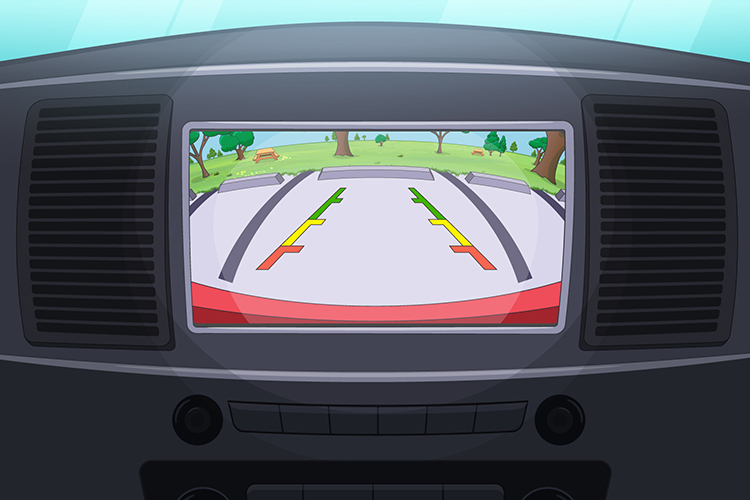How this technology works
Back-up cameras display the area directly behind a vehicle when it is in reverse to prevent a driver from backing into something. They also protect vulnerable road users. These systems display the monitoring area on a screen in front of the driver or in a specially modified rear view mirror. They are required by regulation on passenger cars, SUVs, light pickup trucks, and minivans in Canada (CMVSS 111 Rear Visibility Systems).
Operation
Back-up cameras turn on when you put your vehicle in reverse.
Other names for this technology
- Backing aids
- Rear visibility systems
- Rearview cameras
Description
A screen on a vehicle’s dashboard shows the view behind vehicle as it reverses into a parking spot.
Things for drivers to keep in mind
- Back-up cameras show a clear view of what’s behind the vehicle
- Many vehicles with back-up cameras also have a parking collision warning system that uses warning sounds and lights if there is an obstacle
- Conditions like rain, darkness, glare, dirt on the camera can make it hard for you to see what's behind your vehicle
- Back-up cameras depend on you reversing slowly so you have enough time to avoid hitting an object
- The effectiveness of back-up cameras also depends on your driving habits
- Looking over your shoulder, and checking the display image and mirrors often improves your chances of seeing obstacles
- Drivers are encouraged to read the owner's manual to become familiar with this system, including its capabilities and limitations
